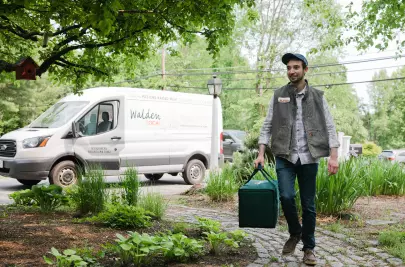Route Planning Tips For Growing Businesses

Route planning doesn’t have to be complicated. These nine tips will help you plan efficient and effective routes that keep customers and drivers happy.

- Share customer details with drivers to speed up deliveries and reduce back-and-forth communication.
- Plan ahead for busy periods by understanding vehicle capacity and when you'll need extra staff.
- Route planning software saves hours daily and transforms manual planning into a 10-15 minute process.
- Print shipping labels after route planning to keep deliveries organized by driver and route.
- Develop systems to assign the right service calls to the right technicians with the right skills.
- Dense routes with 100+ stops dramatically reduce per-delivery costs and improve profitability.
- Automatic customer notifications reduce support calls and let customers plan their day around deliveries.
- Proactive communication is essential for perishables — customers need ETAs and proof of delivery photos.
- Real-time driver tracking helps you catch delays early and make adjustments before problems cascade.
At Routific, route planning and route optimization are our business. We spend a lot of time talking to our customers to find out exactly what small business owners and dispatchers need from our delivery software.
Here are the top nine tips we’ve heard from our customers that other small businesses can benefit from when it comes to route planning. They fall roughly into three categories:
- Getting the foundations right
- Increasing operational efficiency
- Delivering a great customer experience
Let's start with the foundational elements that every small delivery business needs to get right, then build from there.
Getting the foundations right
Before diving into advanced strategies, make sure you have these three fundamentals covered.
1. Share customer details with drivers

At Big Light Letters in Brisbane, Australia, Chris Fernando rents big light-up letters and numbers for special events. His #1 tip? Sharing customer information with his drivers to speed up deliveries and improve customer service.
Chris uses Routific to add notes with customer details to help his drivers with their deliveries:
“There is a notes section where I can put: 'This is what you're delivering. This is the customer's name. This is their contact number. The venue manager is this person. You have to go through a boom gate and dial, whatever, to get access.' Or I'd say, 'Customer wants the letters set up in this particular place.'"
Sharing customer details helps deliveries go smoothly, reducing headaches for drivers and giving customers the best experience possible.
Tools like Routific make these features user-friendly, so teams are more likely to use them to communicate business needs and other important details.
When drivers are armed with essential information, they can make deliveries more quickly and without constant back and forth between dispatch and the customer.
Read more about how to deliver a great customer experience.
2. Plan ahead for busy delivery times
Because Chris is hauling large items, resource planning is key. He needs to know how many orders can fit in his delivery vans, and if he will need to hire an extra driver on some days.
“I do all the planning in advance to see if I need to get an extra staff member to do deliveries or if they will be able to do the full delivery run in the specified time limit that I have. Those time limits are usually given to me by my customers, who ask that I get an item to them or have an item picked up by,” Chris explains.
“Because we have different sized vans and our small van can't take as many items as our big van, it’s really good to know how many units can fit in a particular van. That really does change the way we work. Previous to that… I was just kind of going in blind. And now I don't have to do that because we use route optimization software to help us figure it all out.”
When your route planning software takes vehicle capacity into account, it paints a clear picture of how much your team can handle. That makes it easy to know when you need to hire, so you don’t overburden your team and your fleet.
Read more about how to use vehicle capacity settings in Routific.
3. Use advanced route planning software to save time and improve efficiency
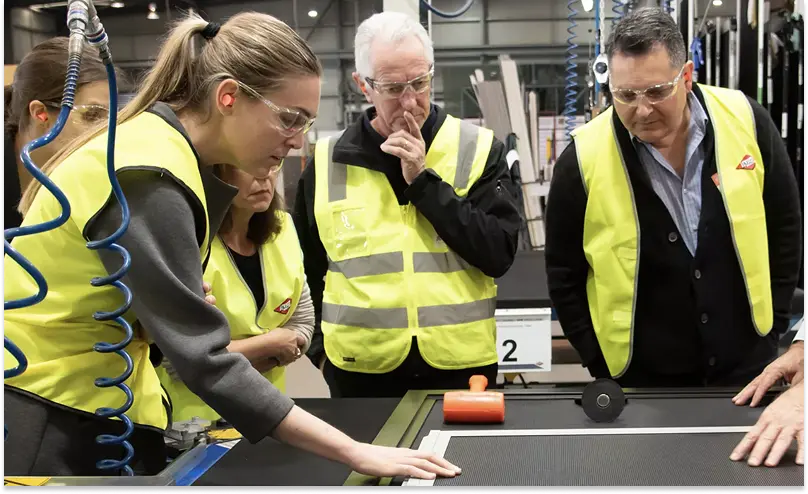
Jason Windows is Australia’s largest supplier of windows, security screens, and doors. For years, Dispatch Supervisor Hamu Sydney relied on manual route planning to manage deliveries. To say the process was time-consuming is an understatement. One team member spent an entire day planning the next day’s routes for their large fleet.
Route planning software changed everything for their logistics operation.
“Routific has taken the job of one person and an entire day and transformed it into a 10 to 15-minute process. It equates to huge savings,” said Hamu.
Route planning tools find the most effective route by taking into account:
- Real-time traffic conditions
- Historic traffic patterns
- Travel time
Finding the most efficient routes keeps your delivery operations running like clockwork while helping you save on fuel costs, lowering operational costs, and reducing wear and tear on your fleet.
Along with time savings, advanced route optimization software has delivered other perks for Jason Windows.
Hamu and his team can monitor jobs that are in progress through:
- Live tracking
- Photos uploaded to the mobile app
- Notes added to the driver app to keep the dispatcher informed
With Routific, the team can also use the Insights feature to improve the customer experience and efficiency by:
- Giving a small incentive to drivers who take on longer routes to balance the workload.
- Keeping track of how long drivers are spending on the road.
- Tracking the number of window frames delivered per kilometers driven and the number of client installations each driver completes.
Automated route planning saves time, improves efficiency, and helps you deliver a better customer experience. So, if you’re still relying on Excel spreadsheets for your delivery process, this is your sign to adopt a route planning tool.
With these basics established, let’s focus on streamlining operations to handle more deliveries with the same resources.
Improving operational efficiency
With solid foundations in place, these strategies will help you maximize efficiency and profitability.
4. Print shipping labels after planning delivery routes

Parker Atkins is co-owner of flower subscription service Bear’s Blooms in Vancouver, Canada. He used to spend a lot of time planning delivery routes in Google Maps, then printing and sorting shipping labels for his flower deliveries. Then he learned to kill two birds with one stone:
“I use Routific to plan multi-stop routes, and then I print the route solution out in CSV format,” Parker explains.
“I make sure to include all the delivery information but I also include our box label. When I download the routes, I can then print everything including the box labels by driver. That way, they’re already sorted. It helps me stay a bit more organized.”
By using delivery management software for his small business operations, Parker saves at least two hours every day.
5. Develop systems to assign service calls

Jeremy Rohloff of Priority Appliances in Las Vegas plans routes for up to six service technicians every day. He needs route management software with the functionalities to do the following:
- Map a route with multiple stops
- Prioritize the dozens of service calls he receives
- Assign multiple stops to the right driver/service technician
Some service calls are more urgent than others. Meanwhile, some calls require a specific technician with a specific skill. How does Jeremy figure out which technician should go where?
“We have technicians where a lot of times, they'll do a first visit. We have to get approval from the property manager, since they're footing the bill, and then we have to order in the parts and send [the technicians] back [at a later date],” Jeremy explains.
“We can't necessarily send technician B to whichever work order technician A went to the first time, because it messes with their pay, and their schedule, and all that other fun stuff. So we use software to tag the service call with the technician’s name.”
By using route optimization software to tag service calls, Jeremy’s field service team is able to ensure that the same technicians return to the same jobs and that the right service calls are being assigned to the technician with the appropriate skills. This makes his workflow a lot smoother and more efficient.
6. Dense routes = cost efficiency
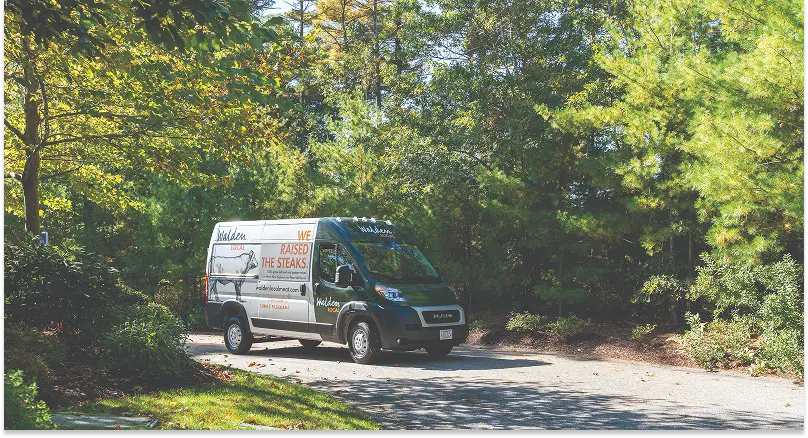
Walden Local delivers locally raised meat in New England and New York. As the company grew, Demand Planning Manager Jackie Andrews faced the challenge of how to serve more customers, in ever more distant locations, while still being cost-effective.
With the help of Routific, Walden Local more than doubled their drivers and grew their routes from 30 deliveries per route per day to 100+ per route in their densest areas.
In their case, higher route density has improved their bottom line by reducing per-delivery costs. The cost savings allow them to reach customers who are often underserved.
“It's worth it for us to send a driver to the tip of the Cape. With density there's leeway,” Jackie said.
Whether you’re running an e-commerce business or a food delivery service, dense and efficient routes will save on fuel consumption and help drivers fulfill more deliveries in less time.
But planning routes like these manually can be challenging. Route optimization software is the simplest way to streamline and automate the process to improve on-time deliveries and customer satisfaction. Smart algorithms eliminate spaghetti routes and driving in circles to ensure efficient delivery stops.
Efficient operations are only half the battle. The other half is keeping your customers informed and happy throughout the delivery process. In the next section, we’ll look at three ways to ensure your customer experience keeps people coming back.
Delivering a great customer experience
Finally, these customer-focused strategies will set you apart from competitors and build lasting loyalty.
7. Keep customers informed of their deliveries
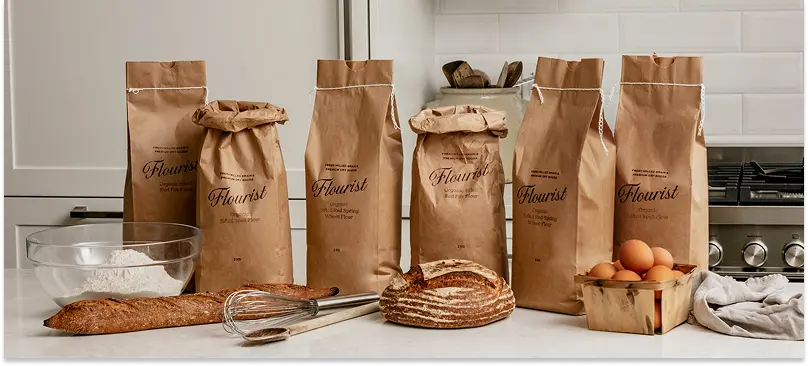
Vancouver-based bakery and food hub Flourist serves fresh-milled flour and deli goods to customers across the great Vancouver metropolitan area.
For co-founder Janna Bishop, route planning software is more than just a way to ensure on-time deliveries. It’s a tool to keep customers in sync with their orders.
“Routific’s platform sends our customers updates about their orders automatically, which helps them go about their day without waiting around for a delivery,” Janna said.
“It also cuts down on the manual communication for our team members. Customers don’t need to call in and ask when their deliveries are coming. They already know.”
Today’s customers expect to be able to track their orders and deliveries. Route optimization software like Routific helps businesses deliver an Amazon-like experience at the local level through customer notifications, proof of delivery photos, and ETAs.
8. Communicate with customers proactively when delivering perishables
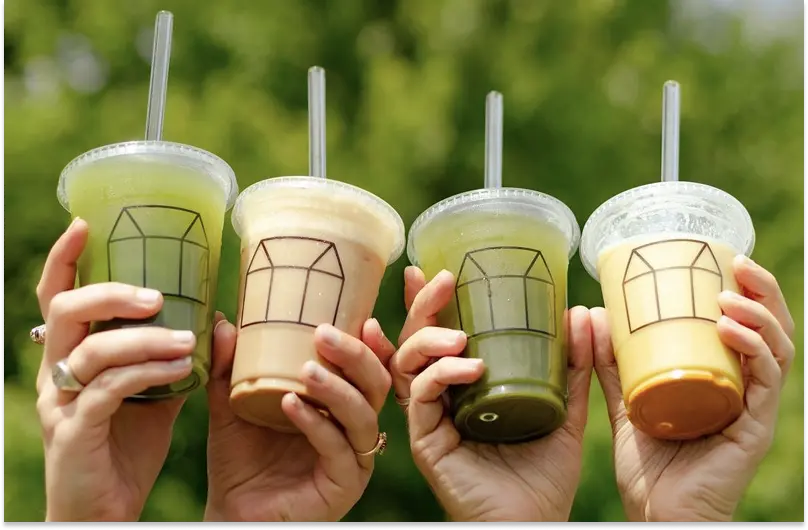
Greenhouse Juice is an organic juice company based in Toronto, Canada. They offer next-day delivery on their cold-pressed juices to ensure freshness and quality. Customers have until midnight to place their orders and get their drinks the next day, so it’s not uncommon for last-minute orders to come through.
When items have a short shelf life, efficient route planning with specific time windows is essential. But that’s just one piece of the puzzle for a delivery business.
Brian Zaffuto, logistics manager, says that to maintain quality they need to be proactive about customer communication.
Greenhouse Juice use Routific to automatically notify customers of their order ETAs, so they can be ready to get their juices in the fridge as quickly as possible.
Delivery notes inform drivers of where to leave orders if customers aren’t home, or whether they should ring the doorbell.
When deliveries are complete, drivers can upload proof of delivery photos.
“That’s a game-changer,” said Zaffuto. “The photos are uploaded to the dispatcher instantly, and we can confirm delivery or offer customer support right away.”
Short and efficient routes are optimal when delivering perishables, like Greenhouse’s juices, but it’s crucial to keep your customers in the know about the status of their orders.
9. Keep track of your drivers in real time

Kevin Kronrad of All Star Specialties Ice Cream in Long Island, New York used to hand his drivers a stack of delivery orders and let them decide where to go and when. He had no visibility on where his drivers had gone and when they’d be back.
With delivery software, things have changed:
“If I know that the guy is supposed to be back at five o'clock and it's 5:30 and he's still not done for the day, I can call him and say, ‘Hey man, route planner said you're supposed to be back at five, what's going on?’" Kevin says.
“Or on the other hand, I can tell my employees: ‘Hey, your route should probably take you until 6:30. I know you're usually used to getting done by five, so let me give a stop to somebody else or let me change something around the route to help you with your personal life too.’"
“I can kind of adjust everything and just make sure that my employees are happy. And then because I can optimize routes based on time constraints, I can keep my customers happy too because they won't get any late deliveries.”
Real-time tracking of your delivery drivers is a game-changer. Unexpected issues like road closures can throw your delivery windows off track. But when you have visibility on your drivers, you can communicate early on and make contingency plans to get things back on track before the entire day goes off course.
Whether you're just starting out or looking to optimize existing operations, these nine tips build on each other to create a comprehensive approach to route planning.
Final thoughts
For delivery services to succeed, drivers need to take the best route and leverage all the tools available to communicate with customers and dispatch, provide real-time updates, send proof of delivery photos, and more.
Using a route planning app is a great place to start if you want to achieve all of these goals.
Once you have a solution you love, use these tips to improve your delivery efficiency and, at the same time, improve the customer experience.
Frequently Asked Questions
Related articles
Liked this article? See below for more recommended reading!
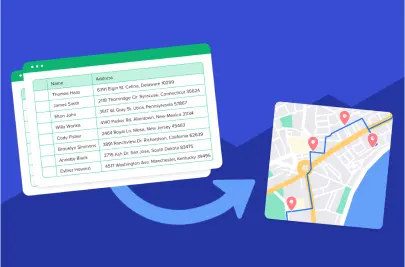
How To Plan Delivery Routes With Excel (With FREE Template)

Next-day Delivery Helps Greenhouse Juice Grow
